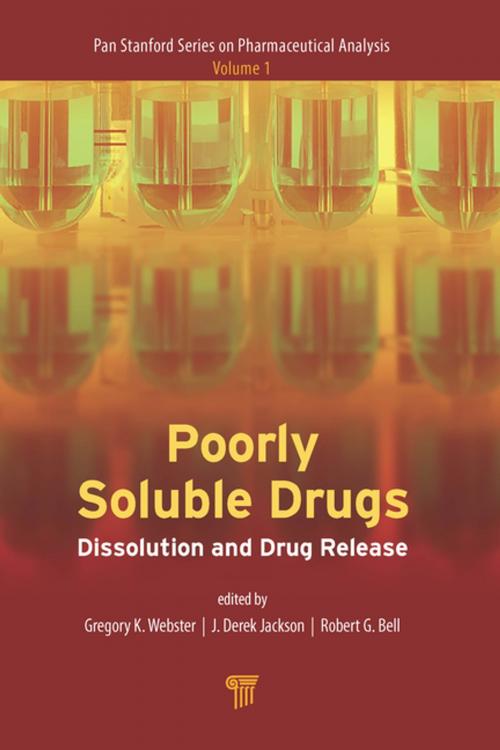Poorly Soluble Drugs
Dissolution and Drug Release
Nonfiction, Science & Nature, Science, Chemistry, Analytic, Health & Well Being, Medical, Specialties, Pharmacy, Medical Science, Pharmacology| Author: | Gregory K. Webster, Robert G. Bell, J. Derek Jackson | ISBN: | 9781315340869 |
| Publisher: | Jenny Stanford Publishing | Publication: | January 6, 2017 |
| Imprint: | Jenny Stanford Publishing | Language: | English |
| Author: | Gregory K. Webster, Robert G. Bell, J. Derek Jackson |
| ISBN: | 9781315340869 |
| Publisher: | Jenny Stanford Publishing |
| Publication: | January 6, 2017 |
| Imprint: | Jenny Stanford Publishing |
| Language: | English |
This book is the first text to provide a comprehensive assessment of the application of fundamental principles of dissolution and drug release testing to poorly soluble compounds and formulations. Such drug products are, vis-à-vis their physical and chemical properties, inherently incompatible with aqueous dissolution. However, dissolution methods are required for product development and selection, as well as for the fulfillment of regulatory obligations with respect to biopharmaceutical assessment and product quality understanding. The percentage of poorly soluble drugs, defined in classes 2 and 4 of the Biopharmaceutics Classification System (BCS), has significantly increased in the modern pharmaceutical development pipeline. This book provides a thorough exposition of general method development strategies for such drugs, including instrumentation and media selection, the use of compendial and non-compendial techniques in product development, and phase-appropriate approaches to dissolution development.
Emerging topics in the field of dissolution are also discussed, including biorelevant and biphasic dissolution, the use on enzymes in dissolution testing, dissolution of suspensions, and drug release of non-oral products. Of particular interest to the industrial pharmaceutical professional, a brief overview of the formulation and solubilization techniques employed in the development of BCS class 2 and 4 drugs to overcome solubility challenges is provided and is complemented by a collection of chapters that survey the approaches and considerations in developing dissolution methodologies for enabling drug delivery technologies, including nanosuspensions, lipid-based formulations, and stabilized amorphous drug formulations.
This book is the first text to provide a comprehensive assessment of the application of fundamental principles of dissolution and drug release testing to poorly soluble compounds and formulations. Such drug products are, vis-à-vis their physical and chemical properties, inherently incompatible with aqueous dissolution. However, dissolution methods are required for product development and selection, as well as for the fulfillment of regulatory obligations with respect to biopharmaceutical assessment and product quality understanding. The percentage of poorly soluble drugs, defined in classes 2 and 4 of the Biopharmaceutics Classification System (BCS), has significantly increased in the modern pharmaceutical development pipeline. This book provides a thorough exposition of general method development strategies for such drugs, including instrumentation and media selection, the use of compendial and non-compendial techniques in product development, and phase-appropriate approaches to dissolution development.
Emerging topics in the field of dissolution are also discussed, including biorelevant and biphasic dissolution, the use on enzymes in dissolution testing, dissolution of suspensions, and drug release of non-oral products. Of particular interest to the industrial pharmaceutical professional, a brief overview of the formulation and solubilization techniques employed in the development of BCS class 2 and 4 drugs to overcome solubility challenges is provided and is complemented by a collection of chapters that survey the approaches and considerations in developing dissolution methodologies for enabling drug delivery technologies, including nanosuspensions, lipid-based formulations, and stabilized amorphous drug formulations.















